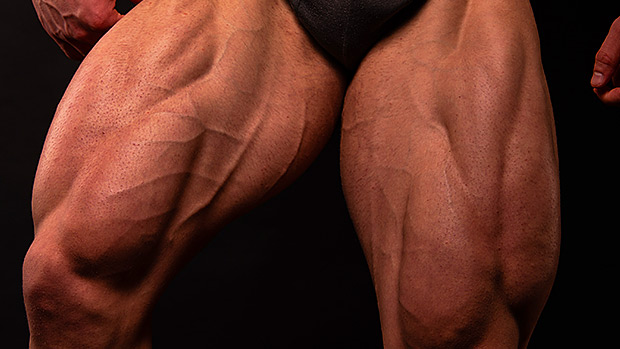Your workout partner may be impressed by barbells loaded up with plates but your body isn't. It doesn't know the weight on the bar, the number of sets you've done, or the amount of reps you're doing.
All it knows is resistance, and that it has to create enough tension to overcome it.
Progressive overload is the primary factor responsible for building strength and muscle: you have to add more stress to your system over time. The most common way to do this is to increase load (weight) or volume.
So the sets, reps, and weight are a nice, clean way for us to keep track of whether we're consistently overloading the body and not just doing random stuff. But what happens when you don't have access to your usual equipment?
You can still use progressive overload with bands. Ultimately, they're limited in their tension capabilities, but by manipulating other variables you can still overload your system.
Combining the Zercher position and split stance is an optimal way to do this. The standard Zercher position is when a barbell rests in front of you in the crooks of your elbows. But in this case, without access to a bar, we'll use the same position with a band.
By looping it underfoot and in the crooks of your elbows, you'll get a few benefits that traditional loading positions can't duplicate.
Here are three ways to keep progressing with bands. Do these for 3-5 sets of 5-10 reps. When you hit the top of the rep range, move to the next progression. When you hit 5 sets of 10 on the rear-foot elevated split squats, get a thicker band.
- Step on the middle of a heavy band and set up with the other knee on the ground.
- Loop each end of the band around the elbows and make your torso vertical.
- Keep your weight on the front foot and drive through it until the top knee is straight.
- Lower under control, keeping the lower half of the working leg vertical to the ground. Tap the knee and repeat.
- By progressing to a dynamic reverse lunge, you now have to decelerate which adds in more eccentric stress than when the feet remain in a static position.
- Set up at the bottom the same way as the split squat. Keeping your weight on the front foot, step back and lower your knee to the floor.
- Drive forcefully through the front foot to return to the starting position.
- By elevating the back leg, it plays less of a role, increasing the amount of stress on the working leg.
- Set up with your back foot, laces down, on a bench. You want your back knee to be just in front of the hip, and your front foot to be stacked under the knee.
- Keeping a vertical torso, and with as little weight on the back foot as possible, push through the front foot until you get to the top.
- Reverse the direction and lower in a bit of an arc back and down until the back knee taps the ground.





